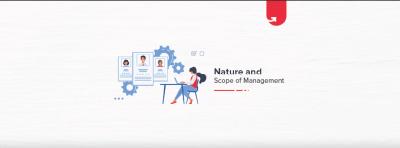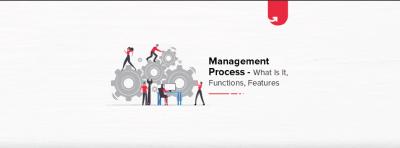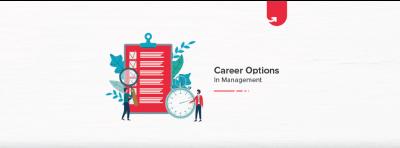Working professionals
Domains
Doctorate
Artificial Intelligence
Data Science
Gen AI & Agentic AI
MBA
Marketing
Management
Education
Project Management
Machine Learning
Doctorate
For All Domains
IIITB & IIM, Udaipur
Chief Technology Officer & AI Leadership ProgrammeSwiss School of Business and Management
Global Doctor of Business Administration from SSBMEdgewood University
Doctorate in Business Administration by Edgewood UniversityGolden Gate University
Doctor of Business Administration From Golden Gate UniversityRushford Business School
Doctor of Business Administration from Rushford Business School, SwitzerlandGolden Gate University
Master + Doctor of Business Administration (MBA+DBA)Leadership / AI
Golden Gate University
DBA in Emerging Technologies with Concentration in Generative AIGolden Gate University
DBA in Digital Leadership from Golden Gate University, San FranciscoArtificial Intelligence
Degree / Exec. PG
IIIT Bangalore
Executive Diploma in Machine Learning and AIOPJ Global University
Master’s Degree in Artificial Intelligence and Data ScienceLiverpool John Moores University
Master of Science in Machine Learning & AIGolden Gate University
DBA in Emerging Technologies with Concentration in Generative AIExecutive Certificate
IIITB & IIM, Udaipur
Chief Technology Officer & AI Leadership ProgrammeIIIT Bangalore
Executive Programme in Generative AI for LeadersupGrad | Microsoft
Gen AI Foundations Certificate Program from MicrosoftupGrad | Microsoft
Gen AI Mastery Certificate for Data AnalysisupGrad | Microsoft
Gen AI Mastery Certificate for Software DevelopmentupGrad | Microsoft
Gen AI Mastery Certificate for Managerial ExcellenceOffline Bootcamps
upGrad
Data Science and AI-MLData Science
Degree / Exec. PG
O.P Jindal Global University
Master’s Degree in Artificial Intelligence and Data ScienceIIIT Bangalore
Executive Diploma in Data Science & AILiverpool John Moores University
Master of Science in Data ScienceExecutive Certificate
upGrad | Microsoft
Gen AI Foundations Certificate Program from MicrosoftupGrad | Microsoft
Gen AI Mastery Certificate for Data AnalysisupGrad | Microsoft
Gen AI Mastery Certificate for Software DevelopmentupGrad | Microsoft
Gen AI Mastery Certificate for Managerial ExcellenceupGrad | Microsoft
Gen AI Mastery Certificate for Content CreationOffline Bootcamps
upGrad
Data Science and AI-MLupGrad
Data AnalyticsGen AI & Agentic AI
Gen AI & Agentic AI
Masters

Paris School of Business
Master of Science in Business Management and TechnologyO.P.Jindal Global University
MBA (with Career Acceleration Program by upGrad)Edgewood University
MBA from Edgewood UniversityO.P.Jindal Global University
MBA from O.P.Jindal Global UniversityGolden Gate University
Master + Doctor of Business Administration (MBA+DBA)Executive Certificate
IMT, Ghaziabad
Advanced General Management ProgramMarketing
Executive Certificate
upGrad | Microsoft
Gen AI Foundations Certificate Program from MicrosoftupGrad | Microsoft
Gen AI Mastery Certificate for Content CreationOffline Bootcamps
upGrad
Digital MarketingManagement
Degree
O.P Jindal Global University
MSc in International Accounting & Finance (ACCA integrated)
Paris School of Business
Master of Science in Business Management and TechnologyGolden Gate University
Master of Arts in Industrial-Organizational PsychologyExecutive Certificate
Education
Education
Northeastern University
Master of Education (M.Ed.) from Northeastern UniversityEdgewood University
Doctor of Education (Ed.D.)Edgewood University
Master of Education (M.Ed.) from Edgewood UniversityProject Management
Certification
Knowledgehut
Leadership And Communications In ProjectsKnowledgehut
Microsoft Project 2007/2010Knowledgehut
Financial Management For Project ManagersKnowledgehut
Fundamentals of Earned Value Management (EVM)Knowledgehut
Fundamentals of Portfolio ManagementKnowledgehut
Fundamentals of Program Management-35c169da468a4cc481c6a8505a74826d.webp&w=128&q=75)
Knowledgehut
CAPM® CertificationsKnowledgehut
Microsoft® Project 2016Certifications & Trainings
-7f4b4f34e09d42bfa73b58f4a230cffa.webp&w=128&q=75)
Knowledgehut
PMP® Certification-7f4b4f34e09d42bfa73b58f4a230cffa.webp&w=128&q=75)
Knowledgehut
PMI-RMP® Certification-7f4b4f34e09d42bfa73b58f4a230cffa.webp&w=128&q=75)
Knowledgehut
PMP Renewal Learning PathKnowledgehut
Oracle Primavera P6 V18.8Knowledgehut
Microsoft® Project 2013-7f4b4f34e09d42bfa73b58f4a230cffa.webp&w=128&q=75)
Knowledgehut
PfMP® Certification CourseKnowledgehut
Project Planning and MonitoringPrince2 Certifications
Knowledgehut
PRINCE2® FoundationKnowledgehut
PRINCE2® PractitionerKnowledgehut
PRINCE2 Agile Foundation and PractitionerKnowledgehut
PRINCE2 Agile® Foundation CertificationKnowledgehut
PRINCE2 Agile® Practitioner CertificationManagement Certifications
-7f4b4f34e09d42bfa73b58f4a230cffa.webp&w=128&q=75)
Knowledgehut
Project Management Masters Certification ProgramKnowledgehut
Change ManagementKnowledgehut
Project Management TechniquesKnowledgehut
Product Management Certification ProgramKnowledgehut
Project Risk ManagementMachine Learning
Machine Learning
Fresh graduates
Domains
Data Science
Management
Marketing
Data Science
Bootcamp
Offline Bootcamps
upGrad
Data Science and AI-MLupGrad
Data AnalyticsManagement
Marketing
Bootcamp
upGrad Campus
Advanced Certificate in Performance MarketingOffline Bootcamps
upGrad
Digital Marketing- Study abroad
- Offline centres
More
RESOURCES
BlogsCutting-edge insights on education
WebinarsLive sessions with industry experts
TutorialsMaster skills with expert guidance
Learning GuideResources for learning and growth
COMPANY
Careers at upGradYour path to educational impact
Hire from upGradTop talent, ready to excel
upGrad for BusinessSkill. Shape. Scale.
Experience centerImmersive learning hubs
About usOur vision for education
OTHERS
Refer and earnShare knowledge, get rewarded
Effective Communication Courses Online
The management field has its own charisma, what with the glamorous corporate exposure, high salary packages, exponential performance based career growth and much more.
20(1)-70997669bd1a4ba2b565901e0eae2fa5%20(1)-de9c82be352d44bcb6a48fecf60b4465.jpeg&w=3840&q=75)
Effective Communication Course Overview
“I’m a great believer that any tool that enhances communication has profound effects in terms of how people can learn from each other and how they can achieve the kind of freedoms that they’re interested in.
- Bill Gate
Every society thrives on communication. Regardless of geographic, cultural, linguistic, political and ethnic differences, the ability to communicate effectively binds us, humans, to co-exist in a community. Communication is the building block of a society, the means to connect people, and without it, there perhaps would be no society in the first place.
Effective communication helps us understand others and be understood. Whether verbal, written, visual, tactile or even a subtle change in body language, communication in any form strongly impacts human relations. Even if you don’t speak the language of another culture, technological advancements like online dictionaries and translators facilitate clear communication despite language barriers.
While communication builds and nurtures human relationships, on the one hand, it is also one of the reasons for conflicts in society. A lack of effective communication skills often leads to misunderstandings and disagreements, whether in our personal lives or the professional sphere. The inability to express ourselves effectively through good communication keeps us from meeting our needs, a prerequisite to surviving in society.
Now, that brings us to the most pertinent question: What is the art of communication, and how does one develop effective communication skills?
The word “communication” has a Latin root, communicate, meaning to share or to make common. Communication is the act of passing information from one person to another. Although the process of transmitting and sharing information exists among all beings in the living world, we will focus our discussion on interpersonal communication in humans.
Communication involves the acts of giving, receiving and sharing information, primarily through talking, reading, listening and writing. Sign languages or body gestures are also forms of communication. Every form of communication includes at least a sender, a recipient and a message. The message transmission depends on multiple factors such as the purpose, emotions, cultural background, mental state, and communication medium.
The sheer complexity of effective communication makes good workplace communication skills a desirable trait in prospective employees. Before acquiring the art of effective communication in the workplace, it is crucial to understand the eight essential components of communication:
![]()
1.Sender
2..Message
3.Receiver
4.Channel
5.Feedback
6.Environment
7..Context
8.nterference
Let’s go through each component of interpersonal communication in detail:
1. Sender
The sender or the source is the person who has to convey a message to another person. Take the instance of a public speaker. The speaker first determines what to say and how to say it and conveys the message verbally through their tone of voice and body language. Then, they choose the right words and non-verbal techniques to get the message's intended meaning across, a process called encoding. Finally, they present the message in front of the audience or the receivers
2. Message
The next component in the art of communication is the message. It is what the sender wants to convey to the receiver. A written message for good communication typically comprises words strung into sentences and organised according to grammar rules. The message may be written in any language and reflects the sender's writing style. On the contrary, a message conveyed verbally is also influenced by the speaker’s body language, tone of voice and appearance
3. Receiver
The receiver or the recipient is the person to whom the sender transmits the message. As such, the receiver may be an individual or a group of individuals, as in the case of mass communication. The receiver decodes the message they receive and tries to understand its meaning. While it is relatively easy to interpret straightforward verbal or written communication, cryptic messages or non-verbal cues of the sender can be barriers to effective communication.
4. Channel
Next comes the channel or the medium through which the message travels between the sender and the receiver. There can be multiple modes of communication. For example, written channels include newspapers, magazine articles, letters, memorandums, invoices, etc. Likewise, spoken channels include face-to-face conversations, telephone conversations, speeches, voice messages, PA systems, radio and voice over internet protocol (VoIP). Digital communication channels primarily include e-mails, online messaging, video calls, social media, etc.
5. Feedback
Feedback refers to the response the receiver gives to the sender, intentionally or unintentionally. Thus, feedback comprises messages the receiver sends back to the source and lets the source know if the message has been received and interpreted in an intended manner. Feedback also allows the receiver to clarify doubts or present an opinion in agreement or disagreement with the sender. Therefore, feedback is essential to accurate and clear communication.
6. Environment
The environment refers to the physical surroundings in which the sender and receiver exchange messages to communicate. An example of such an environment is a room with furniture and various audio-video equipment like screens, projectors, computers, etc. The general mood of the room, whether it is a formal gathering or an informal meetup, also sets the atmosphere and impacts how people communicate. The environment specifically impacts verbal communication, such as when a speaker delivers a speech.
7. Context
The context refers to the situation in which the communication occurs or the expectations of the individuals participating in the communication. For instance, there are various factors that determine the importance of message and its interpretation such as the time, people involved, intonation, situation and style how the message gets conveyed. The time of conversation taking place, context works to interprets the message.
8. Interference
The last component of interpersonal communication is the interference or noise that prevents or distorts the intended meaning of the message sent from the source. Noise interferes with the communication process and disrupts the encoding and decoding of messages. For example, noise from physical sources can be loud honking of cars, a loud playing television or someone talking too loudly to interrupt your thoughts or conversation with another person. On the contrary, psychological noise refers to your thoughts obstructing your attention while trying to understand a written or verbal message.
To understand the importance of effective communication, you need to know about the different types of communication. Broadly, these are:
![]()
1. Oral communication
2. Written communication
3. Non-verbal communication
4..Listening
5. Visual Communication
Let’s explore each type of communication in more detail
1. Oral Communication
Oral or verbal communication involves communicating through the mouth using spoken words. In this case, individuals talk with each other, either face-to-face, through telephonic conversations or via digital platforms like Zoom and Skype. Different forms of oral communication include speeches, discussions, presentations, lectures, conferences, meetings and interviews.
While some forms of oral communication are informal, like chatting with a friend, others, like meetings and conferences, demand a more formal and serious demeanour. Regardless of the type, the fundamentals of oral communication include the speaker’s choice of words and intonation to convey the intended message.
Advantages of oral communication
As one of the earliest forms of human interaction, the advantages of oral communication are:
- Oral communication facilitates spontaneous feedback and quick decision-making.
- Oral communication is not rigid and leaves scope for changes in something that has been said already.
- Oral communication is highly transparent and minimises the chances of misunderstandings.
- Communicating orally saves time and eliminates the trouble of arranging for special media or channels for communication.
- Lastly, oral communication is highly effective for conflicts and problem resolution by talking out differences and disagreements between individuals.
Disadvantages of oral communication
The downsides of communicating orally are:
- Oral communication is often informal and not as organised as written communication, making it less authentic in certain situations.
- The lack of organisation and informal nature of oral communication makes it an unreliable mode of communication for many business scenarios.
- Effective oral communication requires effective conversation skills on the part of the speaker.
- The listeners or audience must be highly attentive to accurately decode the message conveyed orally.
- Although oral communication saves time in informal and trivial situations, lengthy speeches and lectures in a formal meeting can be monotonous and unproductive.
- 2. Written Communication
Written communication involves exchanging any form of written message between or among individuals. While it is still a form of verbal communication, written communication finds expression in written or typed words. Examples of written communication include books, magazines, text messages, e-mails, letters, memorandums, blog posts, reports, proposals, job descriptions, contracts, manuals, bulletins, brochures, postcards and more.
Written communication is the backbone of the business world. When done correctly, written communication leaves a lasting impression on the audience and is one of the most effective communication strategies. Impactful written communication involves careful selection of words, proper sentence construction and the organisation of sentences into meaningful information or message.
Advantages of written communication
Let’s look at the advantages of effective written communication:
- Written communication is generally permanent and extremely useful in maintaining records.
- Written communication provides a ready repertoire of valid references and records.
- Written communication is more straightforward than oral communication.
- Written communication is more definite, unlike oral communication, where the speaker may refuse to acknowledge their speech or take back their words.
- The receiver of written communication generally gets sufficient time to think, act and respond.
Disadvantages of written communication
The limitations of written communication include:
- Written communication is time-consuming since significant effort needs to be given to compose a message and send it to the appropriate recipient.
- Feedback is not instant in written communication, making written communication unsuitable for emergencies.
- Effective written communication requires competence in the language, vocabulary and grammar.
- Written communication is somewhat rigid since changes cannot be made easily.
- Written communication is not as effective in maintaining confidentiality as oral, interpersonal communication.
- 3. Non-verbal Communication
Spoken and written words are not the only ways to communicate with others. Cues and gestures such as facial expressions, body language, postures, tone of voice, eye contact and even the way you dress include the different non-verbal ways of communication. Thus, non-verbal communication involves sending and receiving messages without using spoken or written words.
Judee Burgoon (1994) identifies seven types of non-verbal communication: kinesics or body movements, paralanguage, the physical environment and its objects, personal appearance, time, haptics or touch and personal space.
Advantages of non-verbal communication
The advantages of communicating non-verbally include:
- Non-verbal cues and gestures complement verbal communication by adding meaning to them.
- Non-verbal gestures are effective for communicating with illiterate or specially-abled people.
- Non-verbal cues like signs, symbols and hand gestures help express messages faster than oral or written communication.
- Non-verbal communication can be more effective than verbal communication since recipients tend to pay more attention to body language, facial expressions and other non-verbal cues.
- Non-verbal communication provides more clarity, especially if you are communicating with someone who does not speak your language.
Disadvantages of non-verbal communication
The downsides of communicating non-verbally include the following:
- Non-verbal communication is often vague and fails to convey the intended meaning of messages.
- The meaning of hand gestures may vary across cultures, causing misinterpretations and misunderstandings.
- Non-verbal communication is ineffective for lengthy conversations where one must maintain the flow of dialogue for a prolonged period.
- A significant limitation of non-verbal communication is information distortion.
- Non-verbal communication is informal and not well-structured, making it unsuitable for formal situations like business meetings.
- 4. Listening
Mastering the art of listening is an effective communication skill, both in the workplace and in your personal life. Active listening means you give your full attention to the speaker, spend effort understanding what they are saying, reflect, respond appropriately and retain the information for later. Thus, it ensures active participation and engagement of both the speaker and the audience in the conversation.
Active listening skill is something most of us lack with our fast-paced life leaving little to no time and energy to listen patiently. However, active listening techniques like paying close attention to the speaker’s non-verbal cues and avoiding interruptions like fidgeting or asking irrelevant questions are effective ways to build your active listening skillset.
Advantages of active listening
- Active listening builds trust and nurtures strong relationships, both in your personal life and in the workplace.
- Active listening leads to better information retention and helps the listener get a deeper understanding of the subject matter of the conversation.
- Active listening is highly effective in conflict resolution. It helps you think from the other person’s perspective and encourages you to recognise other people’s feelings.
- Listening actively makes you more likely to identify problems and ask the speaker for clarification.
- Active listening in the workplace gives managers a better understanding of the needs and aspirations of employees and facilitates effective communication with superiors and subordinates.
Disadvantages of active listening
While active listening has advantages, there are limitations too. These include:
- One of the biggest challenges to active listening is the disruption the speaker faces while talking or delivering a speech and causing the listeners’ attention to breaking.
- The listener may get overwhelmed with information and fail to sustain their attention.
- Distractions like loud noise or absent-mindedness are significant barriers to active listening.
- The listener may be unable to process information or pay attention if the speaker speaks too fast, complicates the speech or does not have good speaking skills.
- 5. Visual Communication
The fifth type of communication is visual communication, which refers to using visual elements to convey a message. Since visual communication aims to attract attention and educate the audience, effective visual communication must be informative and eye-catching.
Visual communication media typically include infographics, charts, images, animated GIFs, graphs, videos and similar types of content. Regardless of the medium, visual communication effectively conveys relevant data, information and statistics quickly and efficiently. Visual communication includes conferences, presentations, websites, and social media posts.
Advantages of visual communication
The benefits of visual communication are as follows:
- Visual communication helps in more effective information delivery than verbal explanation.
- Communicating a piece of information visually helps the audience better retention and understanding.
- Visual communication is more engaging and attention-grabbing compared to an oral speech or a piece of a written document.
- Visual elements like images and videos are better at evoking an emotional response from the audience than a set of spoken or written words.
- Using catchy and appealing visual aids like an interesting product video helps brands reach their target market more effectively while reinforcing the brand’s image and credibility.
Disadvantages of visual communication
The pointers below highlight the limitations of visual communication:
- Visual communication is ineffective for presenting specific topics or subject matter, such as plans, policies, rules and recommendations.
- Since visual communication tends to be precise and to the point, it is unsuitable for displaying detailed information.
- Visual communication can be expensive, mainly because of the media or channels involved.
- Accuracy is essential in visual communication, particularly in charts, graphs and tables. Lack of accuracy leads to the spread of misinformation and incorrect data.
Regardless of whether you are communicating verbally, non-verbally, visually, or through written words, barriers can disrupt information flow and communication. Thus, identifying and eliminating or reducing these barriers is the key to effective communication.
The common barriers to effective communication are:
1. Noise distractions and interference
2. Physical barriers
3. Perceptual barriers
4. Emotional barriers
Let’s discuss each communication barrier in detail.
1.Noise Distractions and Interference – External and Internal Noise
![]()
Interference and noise distractions refer to anything that stands in the way of the communication between a speaker and a listener. As such, noise can be an external element like a physical sound or internal, such as a mental distraction. Broadly, noise in communication is of the following four types:
- Physical noise - It is the noise and interference in your surroundings, such as honking cars, loud music, crowded places, extreme temperatures, excessively bright light, mobile notifications, pop-up ads and spam, and so on.
- Physiological noise - The distraction affects how you feel and think and thus interferes with the communication process. Physiological noise can arise due to fatigue, hunger, pain, and medication effects.
- Psychological noise - It consists of distractions that stem from a receiver’s internal thoughts and disrupts the communication process. For example, you will find it challenging to give your full attention to understanding a message if you are preoccupied with personal problems.
- Semantic noise - This kind of noise exists when the recipient fails to interpret the meaning of words or what they convey in a message. The use of jargon and technical language in various forms of communication is an example of semantic noise.
- 2. Physical Barriers – Furniture, technology or anything that obstructs the view
![]()
The term physical barrier refers to any physical factor or element that hinders effective communication, whether verbal, non-verbal, written or visual. Physical barriers are visible and can exist in any form, such as furniture, closed doors, walls or an advanced digital device. These structural obstructions, either natural or human-made, block seamless information flow between the sender and receiver. Time differences, distance and technical disturbances also fall within the ambit of physical barriers.
3. Perceptual Barriers – Filtering, selection, distortion, and projection
Perceptual barriers are a person’s internal biases that impact how they perceive their surroundings. These barriers often lead people to develop preconceived notions about other people, ideas and events, resulting in a mental block and the tendency to reject new or unfamiliar information.
Factors that contribute to physical barriers in communication include:
- Filtering - It refers to withholding or modifying information to manipulate a person’s reaction. For example, an employee keeping their poor sales figures from their boss or not passing on critical information to the rest of the team are examples of filtering.
- Selection - Selection or selective perception means filtering messages to suit your own needs, and it is something that mostly happens unconsciously. You are exposed to numerous stimuli daily, and paying attention to every detail is practically impossible. So, you tend to pick the information that you need. While it saves time, selective perception can also disrupt effective communication.
- Distortion - Distortion refers to the loss of meaning of a message or the meaning getting warped during its transmission. It mainly results from misrepresentation or misinterpretation of the message, lack of information about it, or faulty communication channels. Human perception can also lead to distortions and alter the original meaning of a message because of misunderstanding.
- Projection - Projection is the tendency to ascribe one’s attributes to others, leading to a poor understanding of others and standing in the way of effective communication. When you project your characteristics on people, you take it for granted that they are similar to you. For instance, if you are honest, you tend to assume that others are equally honest and trustworthy.
- 4. Emotional Barriers – Psychological state, self-concept and past experience
![]()
Emotional barriers to communication refer to mental limitations that prevent you from communicating effectively and keep you from being your authentic self. An emotional barrier to communication can result from a person’s psychological state, self-concept or past experiences.
- Psychological state - The psychological health of the sender and the recipient significantly impacts communication. If you are mentally unwell or preoccupied with other things, you will be inattentive, retain little or no information, interpret messages negatively and jump to conclusions.
- Self-concept - Self-concept refers to the perception a person has of themselves. It shapes how a person thinks and feels about themselves, their views and opinions, how they perceive others and their communication with others. As such, poor self-concept and an inflated sense of self are both detrimental to effective communication.
- Past experiences - A person’s past experiences are common communication barriers in their personal or professional life. For instance, if you have a bitter encounter with a colleague, you will tend to boycott them in the future and avoid interacting with them, let alone sort out the conflict. In this case, you let one unpleasant experience ruin a professional relationship.
Communicating clearly and effectively is a life skill you can learn with time and effort. It is essential for your personal relationships and helps you build healthy relations at the workplace. Whether you are just starting your career or you hold a senior position, being an effective communicator is a valuable trait for success.
Here are five tips to help you get started with learning the art of effective communication:
1. Be Clear, Concise and Consistent
Aim for the three Cs of effective communication: clarity, conciseness and consistency.
To ensure clarity in communication, identify your key message or the idea/information you want your audience to imbibe. Identifying and developing your key messages will help you focus on what you want to say and maintain clarity in communication. Equally important is keeping your message concise. Short and direct sentences enable you to focus on what you are speaking with a higher chance of getting the message across to the audience. Lastly, be consistent in your communication. Consistency means repeating your key messages as often as needed or being responsive and proactive in your communication.
2. Be Genuine
Being genuine in your communication means speaking and listening authentically while respecting yourself and others.
When you communicate authentically, you bring your genuine thoughts and experiences, showing that you respect yourself and others. Being direct and honest in communication also makes you more confident and inspires people to pay attention to you. Neil Patel, author and social influencer, believes authenticity means “staying true to who you are, what you do, and who you serve.” Extrapolating this idea to the professional sphere, Patel says that companies must first define their core goals, values and beliefs and prove that these exist at the core of the business.
3. Be Considerate and Respectful
Respect and communication go hand-in-hand, which is equally valid for communication in a workplace. Regarding workplace communication skills, showing consideration and respect through communication is the key to lasting professional relationships.
Whether casually conversing with your colleague or boss, negotiating a business deal or pitching an idea, you must not compromise respect and common courtesy. Being considerate and respectful implies that you are polite, courteous and kind. You actively listen and refrain from insulting or ridiculing others, regardless of your mutual history with the other person. Irrespective of personal differences and disagreements, respecting everyone equally, valuing others’ opinions, empathising with them and avoiding being overly condescending or criticising.
4. Listen Well
Listening is key to effective communication, especially in the workplace. Being an effective communicator not only means that you speak well but also requires that you are an active listener.
Talking of a workplace, good listening skills go a long way in boosting productivity, efficiency and the general work environment. After all, it is for a good reason that many successful entrepreneurs and leaders consider listening skills the key to success. To quote Virgin Group founder Richard Branson, “To make it in the entrepreneurial world, you need to listen more than you talk.” In a LinkedIn post, the self-made billionaire further says, “Nobody learned anything by hearing themselves speak.” When you listen actively, you not only hear what the other person has to say but also pay attention to how they say it, their tone of voice and body language.
5. Respond Appropriately
Responding appropriately is as crucial as listening actively when you are communicating. While some require you to say something relevant, other situations may demand no response.
The key to responding appropriately is knowing when you need to react and when you must not. For example, a formal setting like a business meeting with a client may require you to give relevant responses to the client’s queries. On the contrary, if a distressed friend is telling you their troubles, they probably just want you to lend an ear to them. In the second situation, you need not respond much but simply listen in a way that shows you care. To respond appropriately, you must first learn to listen actively. Actively listening includes gestures like eye contact, occasional nodding, a positive body posture, asking questions and giving short verbal prompts such as “I see” and “mhm.”
Effective communication builds healthy relationships, whether at home, at work or in social situations. From a business perspective, poor communication is frustrating and disruptive and causes huge financial losses for companies. One lost e-mail or misinterpreted message can ruin years of hard work and lead to project failures and loss of clients. Therefore, effective communication in the workplace is essential for all, regardless of position or seniority.
Here’s a list of tips and techniques anyone can apply to become an effective communicator and improve interpersonal relationships
1. Listen (and reflect) to others
Reflective listening improves communication by enhancing the listener’s understanding of what the speaker has to say. Thus, practising reflective listening can improve your ability to perceive and understand others’ messages and ideas. However, reflecting does not mean you bombard the speaker with questions or lead the conversation elsewhere with a new topic.
The two main reflecting techniques are mirroring and paraphrasing. Mirroring involves repeating almost precisely what the other person says but keeping it short and simple. On the other hand, paraphrasing means using your own words to reflect the speaker's words, showing that you actively listen and try to understand what the speaker is saying.
2. Pay attention to your body language
Body language involves non-verbal cues you can use to communicate your message. Since non-verbal communication is just as crucial as the words you use, it is paramount that you pay attention to your body language while communicating. What you convey through your body language can impact the other person’s ability to speak or listen and therefore decide the effectiveness of the communication.
For example, conveying your anger or discomfort through your body language (clenched fists or fidgety behaviour) can make others feel uneasy or unsafe, preventing them from paying attention to what you are saying. You can adopt a more positive body language by maintaining eye contact and smiling appropriately to convey compassion. Nod occasionally to show that you are listening, respond with positive affirmations and maintain a posture that does not imply arrogance or disdain
3. Keep an open mind
Open-mindedness in communication involves more than being receptive to new ideas and perspectives. It also includes an understanding of your shortcomings and accepting that having limitations is natural and human. Although you may disagree with someone, being open-minded means accepting that the other person’s viewpoint might be worth exploring, even if it may not align with your expertise.
Start by letting go of control and making space for new thoughts and ideas. Once you open up your mind to new ideas, you will be more receptive to change and reconsider how you view the world. While seeing things from a different perspective allows you to learn, it also increases your chances of failure. However, make those mistakes and learn from them. Most importantly, be truthful and honest enough to accept your flaws.
4. Don’t let fear hold you back
Your fear limits your potential, and it is true even in the case of effective communication. Fear stops you from trying something new and convinces you to believe that the ideal opportunity will present itself to you. In communication, the fear of judgment, ignorance or embarrassment keeps you from being your true self and expressing your thoughts and ideas openly.
Start by confronting conversations that you feel are least intimidating and work your way up to more challenging conversations. Try communicating about your communication fear with your partner, friend or someone who is already aware of the situation. Being open about your fear and acknowledging it will ease the pressure and make your task easier. If your fear of communication stems from an underlying issue like low self-esteem, try seeking professional help to navigate the problem
5. Inject some humour
Humour not only amuses and entertains but also serves to break the ice in awkward or tense situations. However, it does not imply joking around mindlessly. Humour in the right amount can make workplace communication more effective.
Think of a presentation. Most people may think that presenting at a conference or meeting has to be a strictly serious affair with no place for fun or absurdity. Although humour in such situations may be considered unprofessional, it raises the room's energy and nudges participants to pay attention. However, the presenter must use humour cautiously, lest they embarrass or offend anyone. Humour is one of the key communication skills, and when used correctly, it is an effective way to connect with the audience and make interactions more memorable and impactful.
Are you unable to decide whether to opt for an online communication course or enrol on its offline counterpart? Well, you are not alone!
Take a look at these benefits of an online effective communication course over traditional programs and choose the one that suits your learning needs.
- Time and cost - Online communication courses are time-saving and cost-effective. On the contrary, offline programs are more time-intensive and are generally more expensive.
- Flexibility - Since online programs have a flexible schedule, you can take classes according to your own time and pace. Offline courses have a rigid schedule with no room for adjustments.
- Learning pace - You can determine your learning pace in an online communication program. However, an offline program will require you to complete the course within a limited time, regardless of whether you are learning.
- Location - Online communication classes take place on virtual platforms. Unlike offline programs, you do not need to travel to a campus to take classes. That way, you save both time, money and energy.
- Accessibility - Most importantly, online programs provide unlimited access to educational resources. Plus, you can access these resources at any time of the day instead of relying on a fixed number of office hours.
Communication affects every aspect of your life, from a casual conversation with a friend over coffee to how you present yourself in the workplace. How you communicate with those around you decides the quality of your personal and professional relationships. It is a crucial determinant of success in the workplace and happiness in private life.
You can sign up for a communication course if you want to master effective communication skills. These programs are available across online platforms to help you learn the fundamentals of communication and overcome any barriers that may be obstructing your ability to communicate with confidence.
Although the specifics of the syllabus these programs follow vary with the platform, a course on effective communication ideally covers the following topics:
- Recognising and understanding various communication styles
- Verbal communication
- Non-verbal communication
- Written communication
- Developing conversational skills
- Group communication
- Barriers to communication
- Disagreements and conflicts
- Conflict resolution techniques
- Negotiation
- Criticism
- Cultural aspects of communication
- Communications technology
Management Course Instructors
Learn From The Best
Learn from industry leaders in our management courses, offering real-world insights and expertise. Be the best by learning from the best in the industry.
12
Instructors

Mohan Ram

Go-To-Market Lead - APAC
Mohan has 12+ years of experience and is currently working at DigitalOcean, and heads Global partnerships.

Deepak Singh

Head of Products, Group PM
Deepak has experience with both 0-to-1 and products at scale across industries. He also runs a newsletter 'The Growth Catalyst'.

Siddhartha Roy

Director, Product Manager
Siddhartha is currently working at JioSaavn as a Director of Product, managing India's largest digital music streaming service.

AJ Boelens

Client Director
AJ is a leading practitioner and academic for customer-centric strategy and innovation in Asia.

Anshumani Ruddra

Group Product Manager
I am a cross-functional team leader who is neck-deep into product development and excited by the unique opportunity to build products.

Tamara Sanderson

Co-founder of Remote Works, Ex-IDEO
Co-founder at Remote Works, Tamara has 15+ years of experience across IDEO, Google, Automattic and Oliver Wyman

Gaurav Joshi

Head of Design
Gaurav Joshi has been associated with UI/UX design Housing.com, he led product design including design direction.

Gautham Krishnan

VP, Products
Gautham is an ISB Alum with 9+ years of experience across PM leadership positions in companies such as Snapdeal, honestbee & Accenture.

Jeremy Glassenberg

Product Manager
Jeremy, a post-graduate from CMU, is an experienced product leader of over 13 years, currently working as a product manager at DocuSign.

Mythreyee Ganapathy

Product Leader
Mythreyee is an alum of Bentley College with 15+ years of experience as a Programme Manager of digital products.

Pratik Agarwal

Vice President
Pratik helped to set up the SaaS investing practice at SAIF Partners and Playment, Fareye, Haber, Goodera, Sensehawk and Toppr.

Anthony Conta

Senior Product Designer
An award-winning product design leader, Anthony has over 8 years of experience and is currently a Senior Product Designer at Vimeo.
Management Projects
Learn by Doing
Apply management theories to practical scenarios, enhancing your leadership skills. Be prepared to tackle real-world problems with our online management courses
2+
Projects
Work in groups and identify HR challenges in organisations. Solve industry problems by conducting research, collecting primary and/or secondary data, presenting information, analysing and interpreting it
Problem-solving
Critical thinking
Teamwork
Planning
Research Design
Communication and Presentation
Capstone project - HR
Work in groups and identify HR challenges in organisations. Solve industry problems by conducting research, collecting primary and/or secondary data, … Know More
Skills learned
HR Analytics
Problem-solving
Critical thinking
Teamwork
Planning
Research Design
Communication and Presentation
Create a work force plan for a given organisation using resource mapping and resource utilisation strategies and make recommendations and suggestions to increase the effectiveness of the workforce.
Employee retention
Stakeholder management
Consulting and influencing
Workforce Planning and Deployment
Create a work force plan for a given organisation using resource mapping and resource utilisation strategies and make recommendations and suggestions … Know More
Skills learned
Effective workforce planning
Employee retention
Stakeholder management
Consulting and influencing
This Capstone Project is divided into four parts and will test your skills based on different real-life scenarios and challenges you may face as a healthcare professional. Each part of the project will allow you to think of the challenges in healthcare from a multi-dimensional, systems perspective, and provide novel, innovative solutions.
Inventory Management in Hospitals
Application of Regulatory Licences for Healthcare Organisations
Financial accounting and capital budgeting
Evaluation of architectural briefs
Material management skills
Quantitative and Qualitative Research
Data-Driven decision making
Segmentation, targeting and positioning for healthcare organisations
Performance management in healthcare organisations
Analysing the relationship between society and health outcomes
Staffing and recruitment for a healthcare organisation
Capstone project - Health Care
This Capstone Project is divided into four parts and will test your skills based on different real-life scenarios and challenges you may face as a hea… Know More
Skills learned
Managerial Skills
Inventory Management in Hospitals
Application of Regulatory Licences for Healthcare Organisations
Financial accounting and capital budgeting
Evaluation of architectural briefs
Material management skills
Quantitative and Qualitative Research
Data-Driven decision making
Segmentation, targeting and positioning for healthcare organisations
Performance management in healthcare organisations
Analysing the relationship between society and health outcomes
Staffing and recruitment for a healthcare organisation
Success Stories
What Our Learners Have To Say
upGrad is an amazing option if you're looking to upgrade your skills
Special thanks to Dr. Jankhana Khuman and upGrad team for being a great help throughout my learning journey.

Mathivanan
HR Executive
4 Years of Experience
Their user-friendly platform made learning from industry experts super easy
I learnt a lot from the amazing faculty that upGrad brought in for teaching us.

Vatsalya Jaiswal
Assistant Manager
7 Years of Experience
I got the job I wanted within a week of getting my certificate
All I can say is, learning from upGrad really helped me to put myself on top of everyone at least in my domain.

Bharath Shetty
Live Ops Coordinator
9 Years of Experience
Management Free Courses
Start Learning For Free
Begin your management journey with our free best management courses, laying the foundation for advanced skills.

Free Certificate
How to be a Successful Business Analyst
You will learn about the responsibilities of a business analyst, the various skills needed, along with insights on how to prepare for a business analyst’s interview.
1 Hours

Free Certificate
Introduction to Design Thinking
Learn the fundamentals of design thinking and how it helps organizations to innovate, along with the application of design thinking through case studies.
2 Hours

Free Certificate
Investing in the Modern Era
Learn about investing and various investment options available in the market along with how to build and manage a healthy portfolio
2 Hours

Free Certificate
Introduction to International Business Environment
Learn about globalisation and internationalisation along with its benefits and challenges faced by companies and professionals involved in international business.
3 Hours

Free Certificate
Introduction to Entrepreneurship
Learn the defining and behavioral characteristics of a successful entrepreneur and also understand the difference between a manager and an entrepreneur.
3 Hours

Free Certificate
Digital Innovations in the Financial System
Learn about the evolution of digital finance and its benefits along with the applications of AI and blockchain technologies in the financial services industry.
6 Hours

Free Certificate
Introduction to Ratio Analysis
"Learn ratio analysis for businesses, exploring diverse ratios. Calculate, interpret, and analyze real company performance, focusing on profitability ratios. "
5 Hours

Free Certificate
Introduction to Digital Banking
Learn about the importance of a bank in the financial system while understanding how to assess banking tasks and identify those that can be digitized.
6 Hours

Free Certificate
Building Digital Transformation Strategies
Learn the fundamentals of digital transformation and how someone can build and implement digital transformation strategies.
1 Hours

Free Certificate
Introduction to Guesstimates
Learn to solve a given guesstimate along with some tips and tricks that will help you to efficiently find the answer while solving it during an interview.
2 Hours

Free Certificate
Introduction to Consumer Behaviour
Learn to decode consumer behavior and gather insights with the help of consumer behavior models and various case studies.
2 Hours

Free Certificate
Financial Analysis
Learn about the key operating levers needed to evaluate a company's performance and understand the importance of managing working capital.
7 Hours

Free Certificate
Introduction to HR Analytics
Learn HR analytics and understand how you can leverage the power of analytics to analyze HR data and manage the most valuable assets of your organization.
4 Hours
Management Videos
You Might Like To Watch


Understanding Your Market | Product Management Tutorial | upGrad
56:52
4,048 views


Building Artefacts from User Research | Product Management Tutorial | upGrad
59:57
893 views


How to create a good Product Requirements Document | Product Management Tutorial | upGrad
51:44
1,981 views


Minimum Viable Product | Basics & Detailed Perspective of MVP | Product Management Tutorial | upGrad
42:42
64,556 views


Top 10 Skills Of A Product Manager | Product Management | UpGrad
6:50
2,20,455 views


Product Management Certification Program | Product Management Course Demo | upGrad
3:30
5,769 views
Management Blogs
You Might Like To Read

Management is a lucrative career and a dream come true for many. If you want to know all about the scope and nature of management, keep reading this article.

Nitin Gurmukhani

If you want to pursue a course in management, this article will be of great help. Let us find out all about the management process, its features, and functions.

Kamal Jacob

Project management case studies offer valuable insights and best practices for project managers. Explore them to learn the secrets of project success in various industries.

Keerthi Shivakumar

Whether you have work experience or not, you can pick from different career opportunities after studying management. Read this article to find out your options.

Kamal Jacob

This article will help you explore various management project topics to start working on one right away. Our list of management project topics has enough options for you to choose from

Dilip Guru

Wondering how much salary a BBA degree is worth in India? Here's taking a look at the various roles you can pursue with a BBA and the salary you stand to earn.

Kamal Jacob
Learner Support and Services
How Will upGrad Supports You
upGrad Elevate: Virtual hiring drive giving you the opportunity to interview with upGrad's 300+ hiring partners
Job Opportunities Portal: Gain exclusive access to upGrad's Job Opportunities portal which has 100+ openings from upGrad's hiring partners at any given time
Career Mentorship Sessions (1:1)
High Performance Coaching (1:1)
Interactive Live Sessions with leading industry experts covering curriculum + advanced topics
Personalised Industry Session in small groups (of 10-12) with industry experts to augment program curriculum with customized industry based learning
Live Discussion forum for peer to peer doubt resolution monitored by technical experts
Peer to peer networking opportunities with a alumni pool of 10000+
Frequently Asked Questions
1. What is communication?
Communication is conveying information from one place, person or group to another. It involves giving, receiving and sharing information verbally, non-verbally, in writing, visually or electronically.
2. What are the five types of communication?
The five types of communication can be broadly classified into verbal, non-verbal, written, visual and active listening.
3. What are the elements of effective communication?
Some key elements of effective communication are active listening, body language, empathy, confidence, clarity, consistency, conciseness, respect, open-mindedness and feedback.
4. What is the art of communication?
The art of communication is an individual’s ability to give, receive and share information effectively. It involves good speaking, reading, writing and listening skills.
5. What are the types of communication styles?
The four basic communication styles are: passive, aggressive, assertive and passive-aggressive.
6. What is the healthiest communication style?
Assertive communication style is the healthiest, a sweet spot between being too passive or overly aggressive.
7. Which communication style is most effective?
The assertive communication style is the most effective since it takes an open communication approach without being overbearing. Assertive communicators express their own feelings, needs and desires while considering others’ needs.
8. Can art be a form of communication?
Art has been a powerful communication medium since time immemorial. Through art, artists can express their feelings and thoughts more effectively than can ever be possible with words.
9. What are some common barriers to effective communication?
Barriers to effective communication are classified into four types: noise distractions and interference, physical, perceptual, and emotional.
10. How can I be direct and respectful?
Being direct and respectful is a quality of assertive communication. You can be assertive in your communications by actively listening, being open-minded, getting straight to the point instead of beating around the bush, maintaining eye contact and open body language, and using more “I” statements.
11. What is a communication skill?
Communication skill is the ability of an individual to give, receive and share information effectively and with clarity. Listening, speaking, reading, writing, empathy, negotiation, and observation are different types of communication skills.
12. How do you respond to aggressive communication?
Confronting someone aggressive can be challenging. Here are some tips to respond to aggressive communication: keep calm, try injecting humour to lighten the situation, be assertive, and maintain distance.
13. What are the benefits of effective communication in a workplace?
Effective workplace communication has several benefits. It cultivates healthy professional relationships by building trust, encourages teamwork, increases engagement, boosts productivity, fuels innovation and facilitates quick conflict resolution.
14. What are the 7Cs of business communication?
The 7Cs of business communication are correctness, clarity, conciseness, concreteness, courtesy, consideration and completeness.
15. What are the characteristics of effective business communication?
Effective business communication thrives on honesty, clarity and efficiency. These traits are indispensable to inculcating healthy communication practices among employees, regardless of their position or status.


upGrad Learner Support
Talk to our experts. We are available 7 days a week, 10 AM to 7 PM
Indian Nationals
Foreign Nationals
Disclaimer
The above statistics depend on various factors and individual results may vary. Past performance is no guarantee of future results.
The student assumes full responsibility for all expenses associated with visas, travel, & related costs. upGrad does not .






















-ae8d039bbd2a41318308f8d26b52ac8f.svg)




